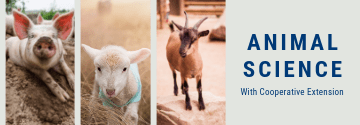With plenty of moisture and lots of sunshine in much of the upper Midwest, corn silage is rapidly maturing.
Now is the time to aggressively monitor crop maturity and plant dry matter, says John Goeser, animal nutrition, research and innovation director for Rock River Laboratory in Watertown, Wis. Although ideal dry matter will vary with silage storage type, the general guideline is to shoot for 35% dry matter (65% moisture.
“The opportunity for failure, or for challenges to arise, is far greater when we aim for dryer and more mature thresholds,” says Goeser. “[Corn silage] will be harder to pack at those dryer levels. If we experience a dry spell with 80° F days and wind for a week, corn can go from drying out a point a day to losing several points of dry matter per day.”
That can lead to a “fluffier” crop with kernels harder to process, he says. “Realizing that chopping can take some time, it’s best to begin harvest just before you reach the dry-matter target,” he says. “Continue chopping beyond the target and realize an average dry matter this is right around the ideal level.”
Goeser also recommends:
Consider high cutting. “Many areas experienced plenty of heat and moisture early in the growing season this year, so I’m forecasting fiber digestibility and stover characteristics to be more ‘woody’ this years,” says Goeser. “These characteristics can be varied with cutting height.”
He recommends a simple on-farm experiment when kernels reach the half-milk line. Cut three or four stalks at normal height, another set of stalks at 12 to 14” and a third set at 18 to 20”. Chop these stalks and then submit the samples for neutral detergent fiber digestibility analysis. The results should tell you which cutting height will provide optimal feed.
Utilize kernel processing scores (KPS) throughout harvest. “It’s one thing to have your equipment ready for the season, but changes happen in equipment and crop status which affects KPS,” he says. So monitor KPS daily or every couple of days.
“Understand that the KPS benchmark is lower for unfermented, fresh chop whole plant corn relative to what it will be six months into fermentation,” he says. The fresh chopped corn KPS goal is 60 to 65, while fermented corn silage should be 75 or better, he says.
Use free app to monitor crop conditions in your area. Rock River Lab is providing a free, crowd-sourced phone app called InField Updates that reports dry matter, NDF and starch statistics on a map. This data can be used to track crop progress in your area. Download the FeedScan app and click on “InField Updates” to try out this tool.


